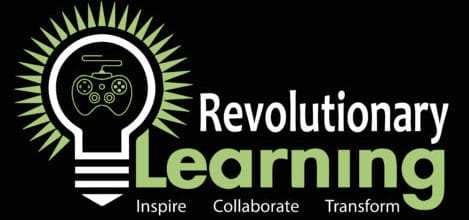Kim Spangenberg is Associate Dean – STEM, The Virtual High School
Program Overview
Space Station Academy is an exciting online and blended learning program developed by The Virtual High School, in collaboration with the Association of Space Explorers, TERC and the Center for Advancement of Science in Space. The program sends students on a virtual mission to the International Space Station. Students undergo pre-flight training, spend virtual time on-orbit exploring how astronauts live and work on the ISS, view Earth from Space using Windows on Earth technology and images obtained by astronauts, and complete a mission report once they return to Earth.
Space Station Academy offers two flight packages: Mission to the International Space Station (ISS) and Science from Space. Science from Space is a 15-week online course that inspires and prepares students for STEM careers. The course includes interactives, videos, interviews with astronauts and updates from the real ISS, while students investigate science and engineering concepts. The International Space Station is one of humanity’s most remarkable accomplishments. It is a sophisticated laboratory in space, pushing the boundaries of research in biology, materials science, medicine, chemistry and Earth observation. The ISS provides a fabulous context for students to explore topics in life science, physical science, earth science and engineering. In the immersive storyline of this for-credit science course, students engage in interesting discussions each week, consider what living and working on the ISS would entail through various activities, and complete hands on activities and design challenges throughout the course. Looking back at Earth from space provides a powerful new perspective, and the innovations that make it all happen naturally spark interest in Science, Technology, Engineering and Math (STEM).
Mission to the ISS is an informal learning program with five course modules covering three main phases. The first phase is “preflight training” in which students explore the design, structure and primary objectives of the ISS. They also learn about orbits, launch vehicles and life in space. Next, students experience a simulated launch to the ISS in the Soyuz where the crew welcomes them. The next few modules cover the second phase, “on-orbit explorations.” Students complete a variety of activities, including an investigation of the effects of prolonged weightlessness via an experiment to visualize loss of bone density and to devise an exercise plan based on the physiological barriers of space travel. Students use cutting-edge tools to observe Earth from space, and are tasked with completing several virtual missions around the station such as building a robotic arm and performing a spacewalk to repair a broken solar panel. The final module is the “post-flight” phase where students face the challenge of reentering the atmosphere. They review technologies and skills associated with safely dealing with the friction of reentry and the methods used for landing safely on Earth. As a culminating activity, they prepare a Mission Space Report that showcases the benefits of space exploration in the domains of life science, Earth science and physical science.
SCIENCE FROM SPACE
Grades 7-10: 15-Week Program
Online science course teaching key STEM concepts (.5 credits)
MISSION TO THE INTERNATIONAL SPACE STATION
Grades 6-12: 4-Week Summer, School-Year, or After-School Program
Can be delivered entirely online or blended, for individual students or entire classroom cohorts
COURSE DESCRIPTIONS
- Course description for Science from Space:
https://my.vhslearning.org/PublicCourseDescription.aspx?c=535
- Course description for Mission to the International Space Station (ISS): https://my.vhslearning.org/PublicCourseDescription.aspx?c=429
Direct URL: http://www.SpaceStationAcademy.org
Company Website: https://vhslearning.org
About the Author
Kim Spangenberg is Associate Dean – STEM. In this role, she is responsible for overseeing Science, Technology, Engineering and Math (STEM) curriculum and initiatives. Her interactions with teachers, students, site coordinators, and parents ensure high quality science education through VHS courses. Kim also works with VHS staff to develop and facilitate professional development training opportunities and is the AP® Coordinator for VHS. Prior to VHS, Kim worked in academic research and taught in both public and private schools. Most recently, she worked at Westborough High School where she taught biology, chemistry, and methods in research, as well as the VHS course Genes and Disease. In addition, Kim was actively involved in curriculum writing and delivery. Kim has a BS in Biology from Stonehill College and a MS from UMASS Medical School.
Email: Kim Spangenberg or call: 978.450.0424.
About The Virtual High School Inc.
The Virtual High School (VHS Inc.) is an online learning pioneer. Since 1996, the nonprofit organization based in Massachusetts has set the standard for quality online education. VHS provides courses taught in global online classrooms for secondary school students and online professional development for educators. The organization also meets the unique educational needs of schools through custom course development and individualized course offerings. VHS design and delivery standards are the model used by the National Education Association in their recommended standards for online learning. The organization has won numerous awards, including the Stockholm Challenge Award for Global Excellence in Information Technology, and is a three-time winner of the United States Distance Learning Association’s (USDLA) award for Excellence in Programming and Excellence in Best Practices. The Virtual High School is accredited by MSA-CESS and AdvancED, and courses are NCAA-approved.

